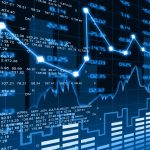What happens when irrational exuberance, groupthink, and wishful thinking begin to cloud narrative, dominate the rhetoric, and shape decision-making? Nowhere has this been more evident than in the weeks following Donald Trump’s 2024 re-election, when many on Wall Street embraced the idea that tax cuts, deregulation, and Trump’s focus on stock market performance would unleash another round of so-called “animal spirits.”
At that time, the mood was exuberant and very few voices urged caution. Fewer still engaged in serious downside planning or worst-case scenario analysis. Instead, the prevailing belief was that Trump’s aggressive rhetoric on tariffs and his promise to upend the global trading system were primarily negotiating tactics — a maximalist stance aimed at securing “better deals” for the U.S., although few could articulate anything specific about those deals while still insisting that this was Trump’s approach.
Those of us in Washington who fought through the bruising first Trump trade war knew better. We understood that Trump’s tariffs and trade threats weren’t posturing. They are, and have always been, central to his worldview, in which tariffs are instruments to regain control over a global trading system that he feels have disadvantaged America. Tariffs are not merely rhetorical bargaining chips — they are hammers and hatchets to bludgeon trade partners. This time around, as early evidence has shown, he intends to go much further than in 2018.
One key moment is fast approaching: April 2, a date Trump himself has called “the big one” and in a Truth Social post on Wednesday declared as “Liberation Day in America!!!”
On that day, there is a strong likelihood that the centerpiece of his America First Trade Policy, outlined in an executive order signed on his first day back in office, will begin to take effect. The policy would implement sweeping across-the-board tariffs, expand retaliatory authority, and grant the administration wide latitude to impose punitive trade actions with minimal consultation or public comment. It’s a serious escalation, and yet, there remains a sense among many market participants that this, too, will be moderated or softened through private conversations or early market signaling. It is always possible, but the signs suggest otherwise.
Compounding this is a continued hope that figures like Trump’s Treasury Secretary Scott Bessent and Commerce Secretary Howard Lutnick will somehow wake up — although woke is not what this administration is about — and moderate the administration’s economic approach. Bessent, a former hedge fund manager, and Lutnick, a Wall Street CEO, were expected to be the financial calming influence — the “adults in the room” with market credibility. Instead, both Bessent and Lutnick have emerged as prominent advocates for Trump’s aggressive trade agenda, unapologetically supporting all of the early tariff actions. They are surely likely to support the April 2 tariff rollout, and explain away the likely fiscal contraction and broader economic realignment, even as markets continue to wobble.
In recent appearances on “Meet the Press” and other outlets, Bessent has dismissed concerns about market correction, calling recent pullbacks “healthy” and reiterating the administration’s commitment to its course. Lutnick has been no less emphatic. These voices aren’t subtle nudges — they are bullhorns amplifying the administration’s commitment to fundamentally reshape U.S. trade policy.But that’s precisely why it’s worth contrasting their posture with other, less noisy, but no less important voices inside the administration. One of those is U.S. Trade Representative Jamieson Greer, who has quietly undertaken the complex, unglamorous work of reintroducing some structure and process into tariff policy. Greer recognizes what many in the market overlook — that without a clear strategy, transparent and participatory processes, and disciplined execution, volatility risks will continue to rise substantially.
Wall Street would do well to pay more attention to that contrast. The long-term stability of trade policy may well depend on those who are putting in the hard, methodical work behind the scenes.
So, where do we go from here?
Outside the administration, several trade professionals and policy analysts have been sounding the alarm — often drowned out by louder, more familiar market voices. Experts like Matt Goodman at the Council on Foreign Relations, Bill Reinsch and Scott Miller from CSIS and their podcast “The Trade Guys,” and Kevin Nealer at the Scowcroft Group, have all been publicly or privately warning for some time of the significant risks associated with unchecked tariff escalation. They, along with economists like Brad Setser, have clearly outlined how aggressive tariff actions invite retaliation, disrupt supply chains, and impose real costs on American businesses and consumers — many in heavily red Trump country. These warnings deserve more attention on Wall Street, on Main Street, in boardrooms, and on trading floors.







